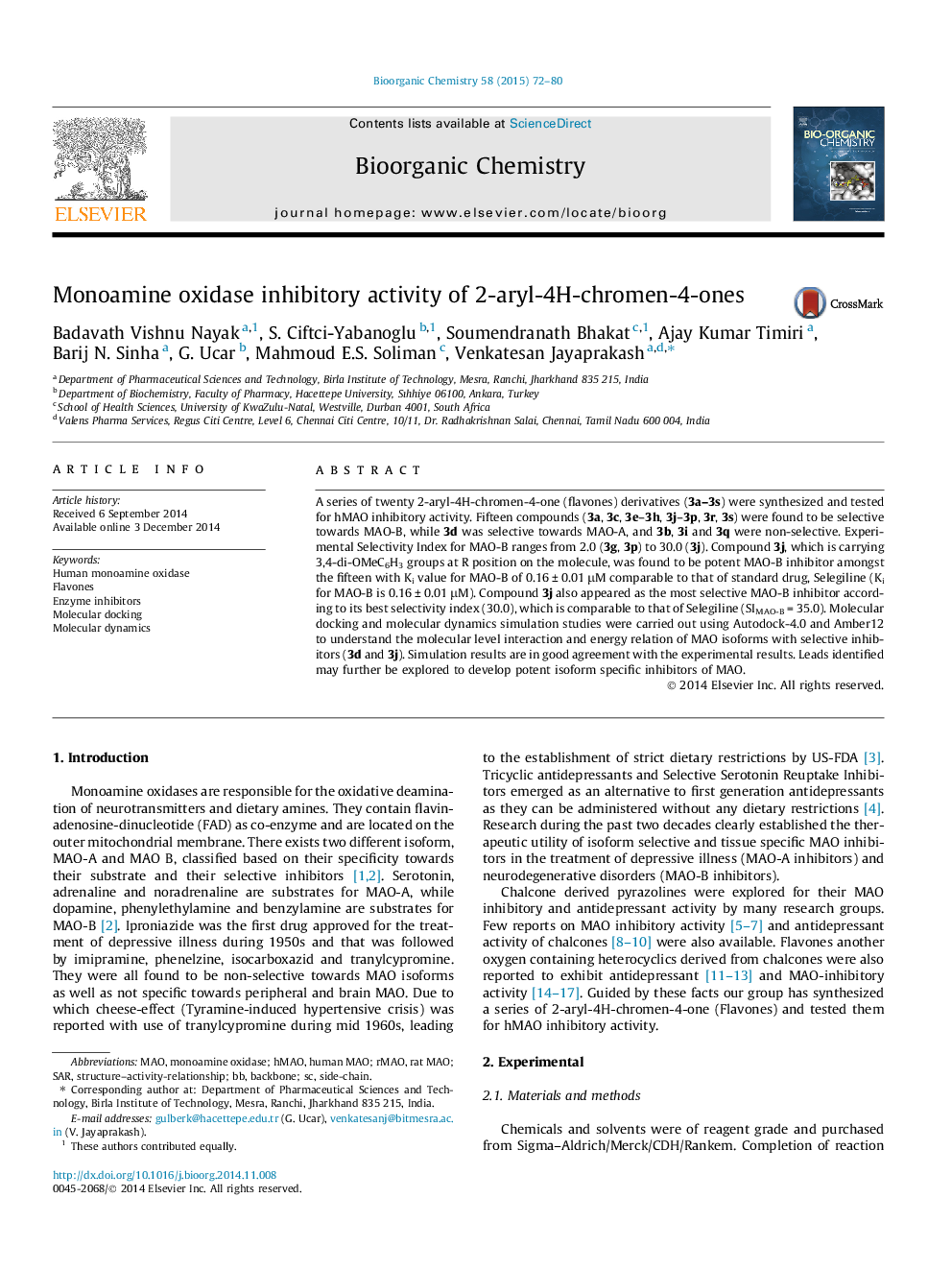| Article ID | Journal | Published Year | Pages | File Type |
|---|---|---|---|---|
| 1355616 | Bioorganic Chemistry | 2015 | 9 Pages |
•Twenty flavones (3a–3s) were tested for their MAO inhibitory activity.•Fifteen compounds were found to inhibit MAO-B isoform selectively.•3j (Ki = 0.16 ± 0.01 μM) was identified as a potent, selective and reversible MAO-B inhibitor.•Nature of functional groups determines potency and selectivity.
A series of twenty 2-aryl-4H-chromen-4-one (flavones) derivatives (3a–3s) were synthesized and tested for hMAO inhibitory activity. Fifteen compounds (3a, 3c, 3e–3h, 3j–3p, 3r, 3s) were found to be selective towards MAO-B, while 3d was selective towards MAO-A, and 3b, 3i and 3q were non-selective. Experimental Selectivity Index for MAO-B ranges from 2.0 (3g, 3p) to 30.0 (3j). Compound 3j, which is carrying 3,4-di-OMeC6H3 groups at R position on the molecule, was found to be potent MAO-B inhibitor amongst the fifteen with Ki value for MAO-B of 0.16 ± 0.01 μM comparable to that of standard drug, Selegiline (Ki for MAO-B is 0.16 ± 0.01 μM). Compound 3j also appeared as the most selective MAO-B inhibitor according to its best selectivity index (30.0), which is comparable to that of Selegiline (SIMAO-B = 35.0). Molecular docking and molecular dynamics simulation studies were carried out using Autodock-4.0 and Amber12 to understand the molecular level interaction and energy relation of MAO isoforms with selective inhibitors (3d and 3j). Simulation results are in good agreement with the experimental results. Leads identified may further be explored to develop potent isoform specific inhibitors of MAO.
Graphical abstractFigure optionsDownload full-size imageDownload as PowerPoint slide
